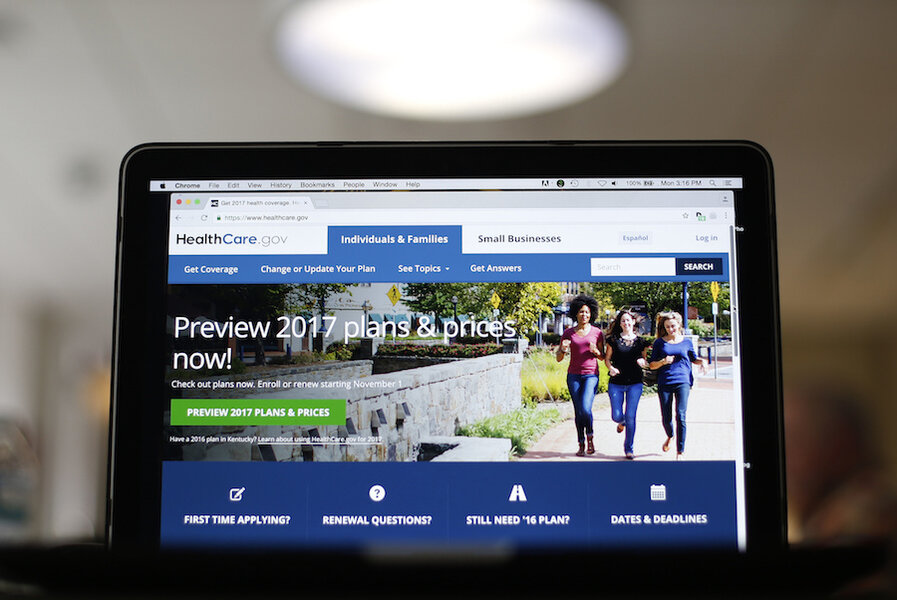Repealing the ACA means tax cuts for high-income households, raised taxes for others
Loading...
Repealing the Affordable Care Act would cut taxes significantly for the highest income one percent of US households, according to a new Tax Policy Center analysis. At the same time, it would raise taxes on average for low- and moderate-income households.
The ACA includes several different tax provisions. On one side of the ledger is the large refundable tax credit that subsidizes insurance premiums for many people who buy coverage on the ACA’s health exchange. On the other side: tax increases designed to both raise revenue and encourage the purchase of adequate—but not excessive--insurance. They include a penalty tax for individuals without adequate insurance, an excise tax on employers with 50 or more workers who offer insufficient coverage, and the so-called Cadillac tax on generous employer-sponsored health benefits. The law also created two extra taxes on high-income individuals--a 0.9 percent payroll surtax on earnings and a 3.8 percent tax on net investment income for individuals with incomes exceeding $200,000 ($250,000 for couples).
Overall, dumping all the ACA taxes would cut taxes by an average of $180 per household in 2017—a 0.3 increase in after-tax incomes. Of course, taxes are not the only measure of people’s well-being. A new analysis by the Urban Institute’s Health Policy Center estimates that eliminating the law without adopting a replacement could increase the number of people without insurance by more than 29 million, putting them at risk for out-of-pocket medical costs that would far exceed any tax savings.
Still, it is useful to look at how repealing the law would affect the tax bills of households across the income spectrum. On average, the lowest-income households (that make less than about $25,000) would see their taxes rise by $90, or about 0.6 percent of their after-tax income. But that average masks a wide variation. Most low-income households would see no change at all in their taxes. But about 7 percent would get a tax cut of about $1,200 on average while 4 percent would face a very big tax hike, averaging nearly $3,900—mostly because they’d lose the benefit of the premium subsidies.
Winners and Losers
Middle-income households, who make between $52,000 and $89,000 would get an average tax increase of $80, but that average also tells only part of the story. About 94 percent would get a small tax cut averaging $110, but 3 percent would be hit with a tax hike averaging $6,200, reflecting the loss of the ACA’s insurance subsidies.
By contrast, nearly everyone in the highest income one percent would enjoy a substantial tax cut, averaging $33,000 or about 2.1 percent of after-tax income. Those in the top 0.1 percent would get an average tax cut of about $197,000, raising their after-tax incomes by 2.6 percent, thanks to the repeal of the net investment tax and the extra Medicare tax.
TPC took a closer look at the specific tax changes. For example, repealing the premium subsidies and coverage penalties, which were key to the basic design of the Obama health reform, mostly hurt those in the lowest 40 percent of income, who make about $52,000 or less. The highest income families would see no change in their after-tax incomes, on average, if Congress eliminated those provisions.
By contrast, high-income households would receive nearly all the benefit of repealing the Medicare surtax and the net investment tax—no surprise since they were the explicit targets of those tax hikes. For instance, 90 percent of the benefit from repeal of the 3.8 percent net investment tax would go to those in the top one percent, who make $774,000 or more. Their 2017 tax cut would average $25,000, or 1.6 percent of their after-tax income. Those in the top 0.1 percent would enjoy an average tax cut of $165,000, boosting their after-tax incomes by 2.2 percent.
Medicare Surtax
The pattern is similar with repeal of the Medicare surtax, though the numbers are smaller. More than 99 percent would get no benefit at all. But those in the top one percent would get three-quarters of the benefit—enjoying an average tax cut of $7,300.
The story is very different when it comes to dumping the Cadillac tax. That would cut taxes by an average of $90, but the benefits are distributed much more widely. Middle income households, which make between $52,000 and $89,000, would see an average tax cut of $110, or 0.2 percent of their after-tax income. Those at the very top would see their taxes cut by a few hundred dollars on average, but the tax cut would be inconsequential as a percentage of their income.
TPC also looked at what would happen under full repeal in 2025. The lowest-income 40 percent would pay higher taxes on average, while higher income people would enjoy a substantial tax cut. A few of the lowest-income households would get hit with a big tax hike but most would pay a bit less than under current law. Nearly all high-income people would continue to receive very large tax cuts, with those in the top one percent averaging a cut of $46,000.
In short, the ACA taxes affect different taxpayers in very different ways, but in general, repealing the health reform law would, on average, cut taxes for the rich and raise them for low-income households.
This article first appeared in TaxVox.








